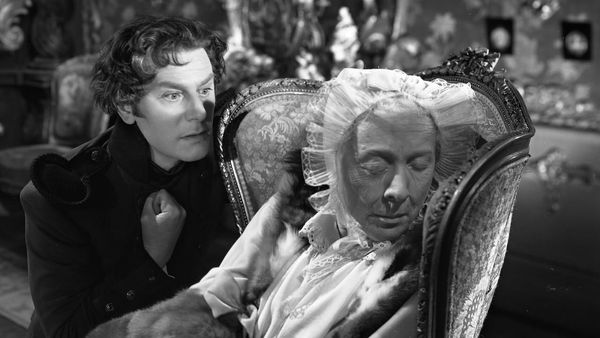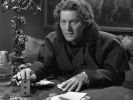Eye For Film >> Movies >> The Queen Of Spades (1949) Film Review

With the likes of James Cameron spending over a decade just to make it through the planning stages for a film, it seems incredible that Thorold Dickinson stepped up to the directorial plate for The Queen Of Spades just five and a bit days before shooting was to start. Even more surprising is that the end result is so very good - in terms not only of its story and acting, but also with regard to its technical complexity.
Set in early 1800s Russia, despite being billed as a supernatural drama, this is really a straightforward melodrama for its first two-thirds. Don't let this put you off, though, ghostly rattlings do occur eventually and, in the meantime, this is a solidly told tale of one man's desire for all-consuming wealth. Anton Walbrook is the ice-cold cad, Suvorin, at the centre of the piece. An engineers' captain, he is looked down upon by many of his fellow officers - who come from an altogether more landed class. This has led to a deep-seated envy and so, when he becomes privy to the tale of the rich Countess Ranevskaya (Edith Evans in her first major film role), whom he hears made her fortune at cards via a pact with the devil, he is determined to learn her secret for himself. So he begins to woo the Countess's ward Lizaveta (Yvonne Mitchell, also in her screen debut), who has little idea that she's just another card in the game.

Thanks to a loving restoration, the film's beautiful cinematography can be seen in all its glory. The use of light and shade recalls films of the silent era, particularly the German expressionism of Max Ophuls and Fritz Lang, the echoes of whose megalomaniac Dr Mabuse are also clearly evident in the character of Suvorin. This use of shadow adds a deepening menace to the action, perfectly mirrored by Walbrook's commanding performance as the obsessed captain as he tempers the stylistic fervour of silent-film style melodramatics with a steely determination. Evans is also mesmeric as the Countess - a role that prefigures her equally excellent performance as Lady Bracknell three years later. It's true that Mitchell fades into the background somewhat by comparison, but this is a minor grumble and has more to do with the weakness of her character compared to those around her than with her acting itself.
Although the film's look is striking, mention must also be made of the innovative use of sound to ramp up the tension once the hauntings begin. Dickinson and his technical team cleverly marry up the age-old device of things that go bump in the night with a wall of sound created, in part, by a reversed recording of a jet engine taking off and news recordings of bomb blasts during the Blitz. Deliciously dark and still able to make audiences jump 60 years after it was created, this is a black-and-white gem that truly deserves to be hailed as a 'lost classic'. Find it a place in your DVD collection.
Reviewed on: 15 Jan 2010

















